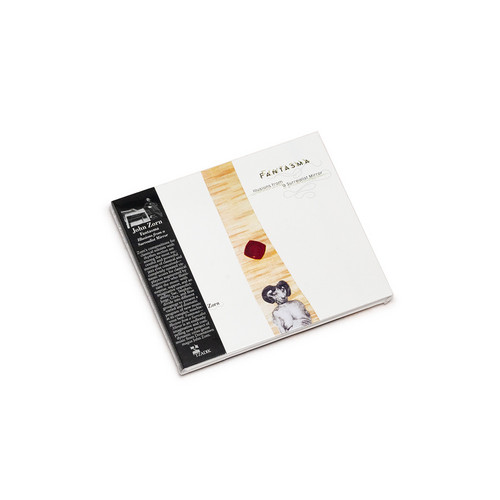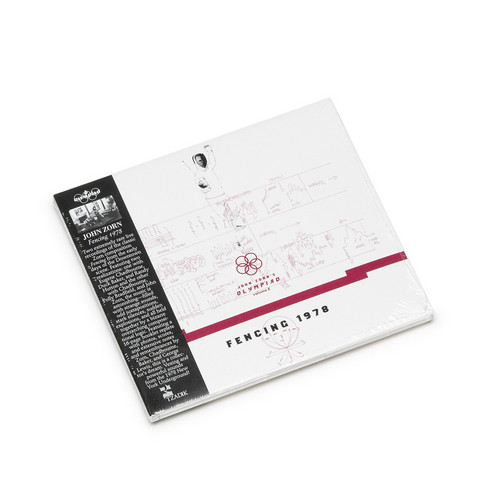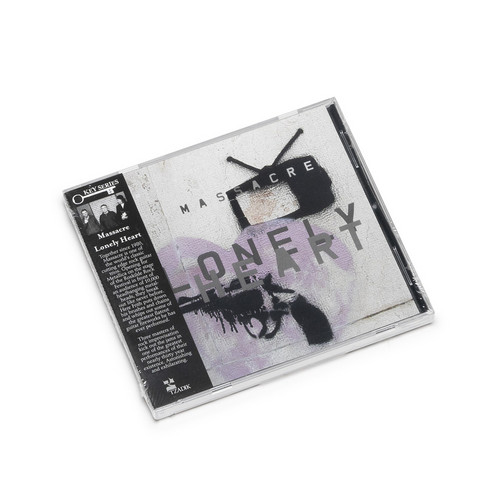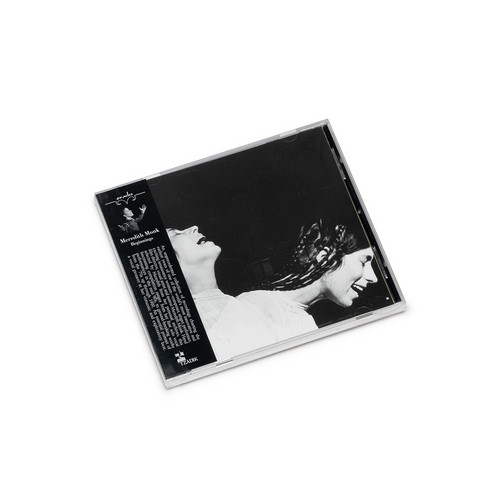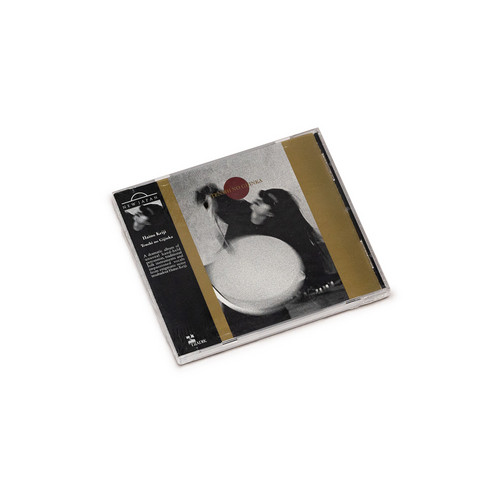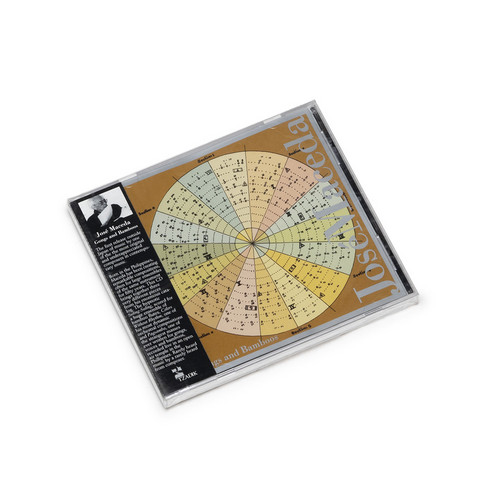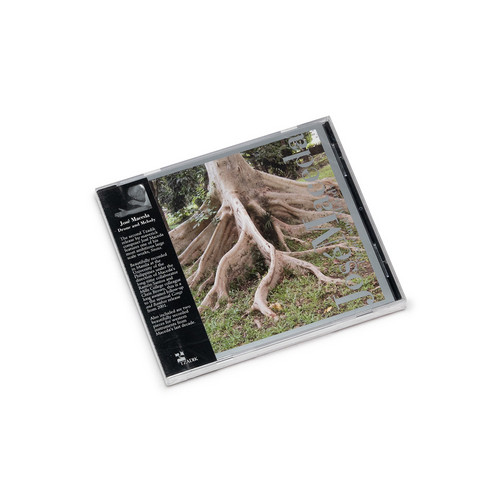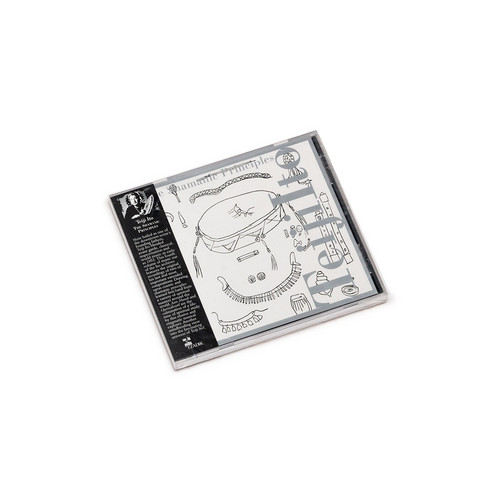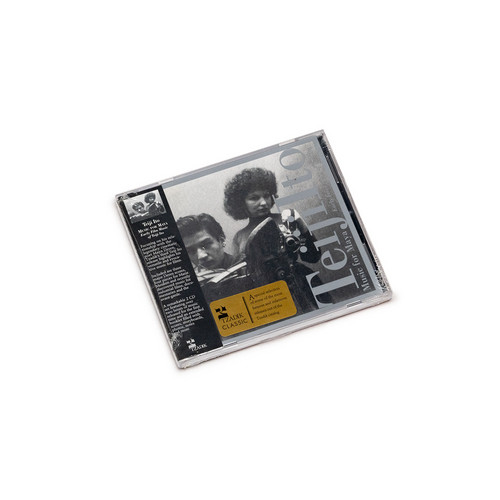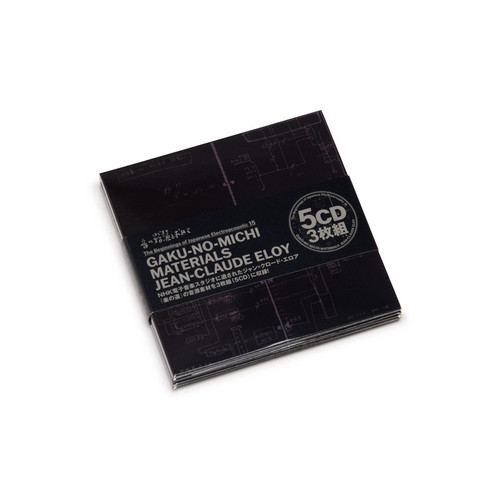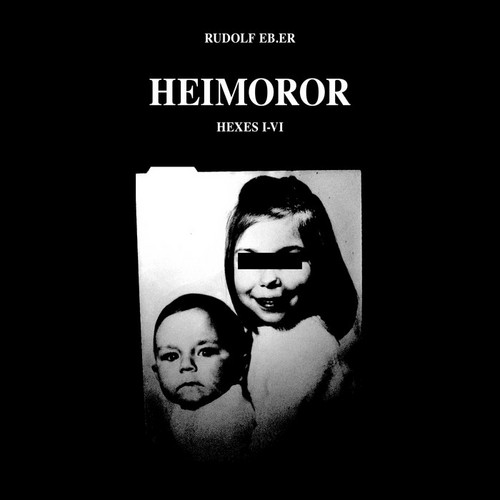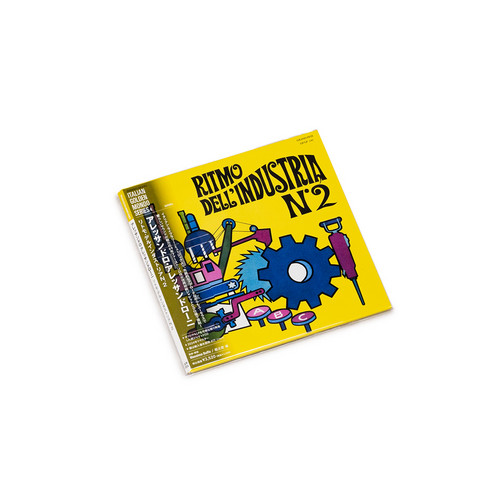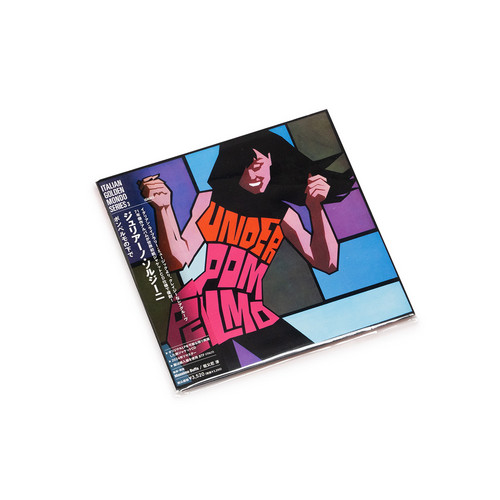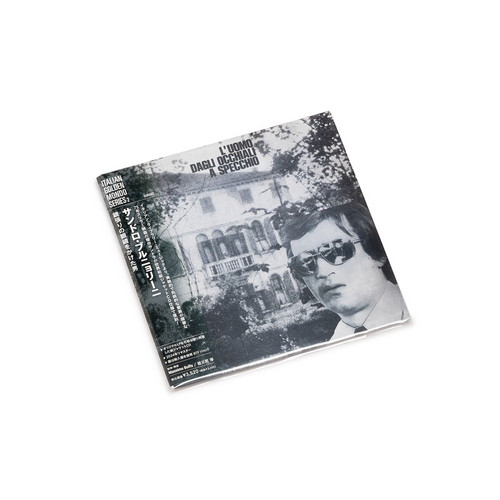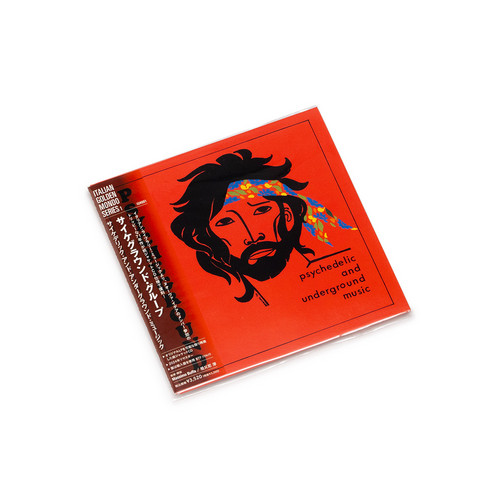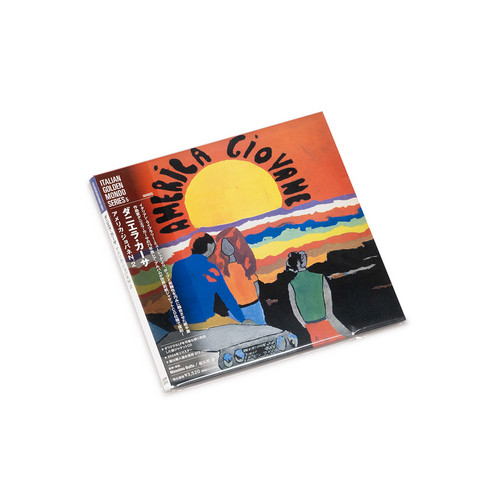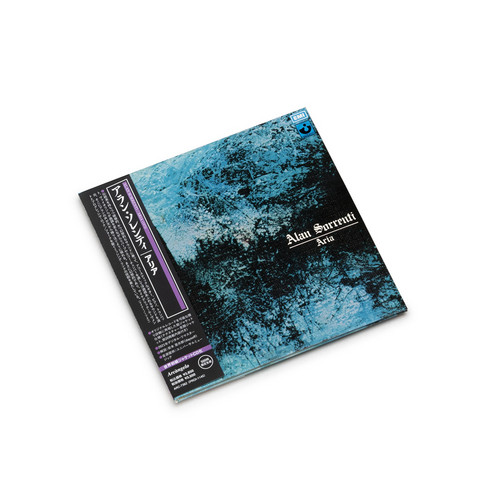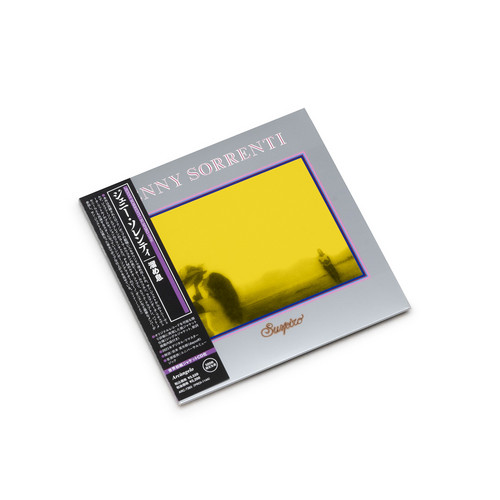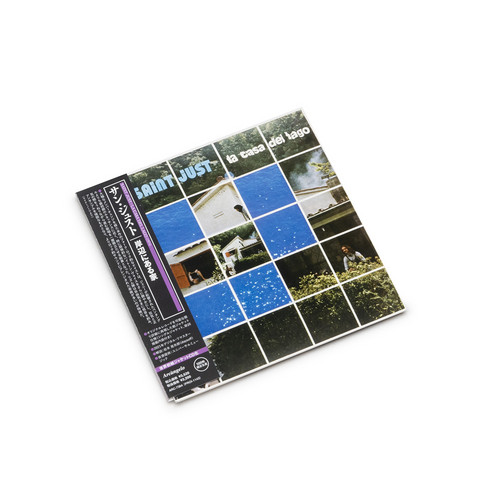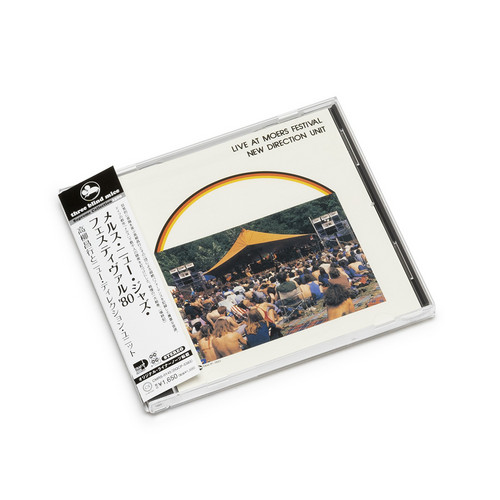Back in stock
Fantasma (Illusions From A Surrealist Mirror)
Zorn’s compositions for classical soloists with rhythm section are among the most successful and powerful meetings of classical and jazz ever conceived—completely notated virtuosic scores for classical players augmented by improvisers who illuminate the music with surprise, support, and an imaginative unpredictability. Mining this magical world since 2010, the project reached its apotheosis in the acclaimed 2021 release “Heaven and Earth Magick.” Here that same quartet divides into different gro…
Fencing 1978 (John Zorn's Olympiad Volume 2)
*In process of stocking.* Two extremely rare live recordings of the classic Zorn composition “Fencing” from the early days of the Downtown scene. Featuring two realizations: one with Eugene Chadbourne, Duck Baker, and Randy Hutton and the other with Chadbourne, Polly Bradfield, and John Zorn, the music is astonishing—filled with strange sounds, odd juxtapositions, stark silences, sudden explosions, and all held together by a bizarre overarching compositional logic. Featuring a 16-page booklet re…
Lonely Heart
Together since 1980, Massacre is one of the world’s classic cutting edge rock guitar trios. Opening for Metallica on the stage of the Roskilde Rock festival in front of an audience of 10,000 metal heads, they break out like never before. Here Frith puts down his brushes and chains and whips out some of the greatest flatout guitar fireworks he has ever performed. Three masters of rock improvisation kick out the jams in one of the greatest performances of their nearly thirty year existence. Astoni…
Beginnings
The pieces in Tzadik's collection of early works by Meredith Monk have either never been released before or are heard in performances released here for the first time. Since her 1981 album Dolmen Music, Monk has recorded for ECM, and these selections (including some live performances) all predate that release. The album begins with a disarmingly simple version of Greensleeves, made in 1966; it's intriguing to hear Monk's distinctive voice conventionally used in a folk song. Monk tends work in la…
Tenshi No Gijinka
Keiji Haino's ritualistic 1995 album features nine untitled pieces of voice and percussion. The Japanese avant-garde master creates meditative spaces through drones, cymbal crashes, and gargled vocals, building esoteric rituals that explore the inner sounds of existence on Tzadik.
Gongs and Bamboo
The first release outside Japan of music by one of the most original and underappreciated composers in contemporary music brings José Maceda's remarkable catalog to international attention. Born in 1900 in the Philippines, Maceda created extraordinary compositions, often for large ensembles of the same instrument, across five decades of creative output. This CD brings together three very different pieces from his enormous catalog, showcasing the breadth and originality of his compositional visio…
Drone And Melody
This is the second Tzadik release of music by one of the most original and under-appreciated composers of the twentieth century. With José Maceda's passing in 2004, several of his most passionate musical collaborators have been continuing his legacy and they come together here to present his most ambitious and greatest large scale work—Strata. Beautifully recorded in Manila at the University of the Philippines and directed by Maceda's long-time collaborator Ramón Santos and Mills College colleag…
The Shamanic Principles
Teiji Ito's The Shamanic Principles explores spiritual dimensions of sound - fourth Tzadik release documenting composer's journey into sacred music and ritual performance
Music For Maya
Teiji Ito (January 22, 1935 – August 16, 1982) was a Japanese-born American composer and performer best known for his scores for the avant-garde films by Maya Deren. This comprehensive collection, Music For Maya, presents the film music of one of the most innovative composer-filmmaker partnerships of the 20th century, showcasing Ito's revolutionary approach to cinematic sound. Ito was born in Tokyo, Japan to a theatrical family. His mother, Teiko Ono, was a dancer and his father, Yuji Ito, was a…
Gaku-No-Michi Materials
Riding an incredible high, Sound3 Co.’s groundbreaking “The Beginning of Japanese Electroacoustic” series returns with its 15th and most ambitious release to date: “Gaku-No-Michi Material”, an astounding 5CD set, presenting the French composer Jean-Claude Eloy’s legendary, monumental electroacoustic work - recorded in Japan between 1977 and 1978 - “Gaku-No-Michi” in a revelatory new way. Comprising 22 tracks, each representing an individual reel of the materials used by Eloy when performing the …
Heimoror - Hexes I-vi
"Heimoror" is the übertitle of Rudolf Heimo Eb.er’s audio-working period 2021/22. Most of the source material, documents of obscure and psychomagick acts, were recorded at the attic of the old, but newly inhabited, Om Kult farmhouse near Osaka, Japan. Combined with Rudolf’s organ and violin playing and often edited by the use of monaural cassette recorders and analogue filters, the recordings reflect these grim, animistic-shintōid events and deranged lo-fi rituals commited.
The "Heimoror" works …
Ritmo dell’industria N. 2
** mini LP replica with obi & Japanese insert ** At the end of the ‘60s in Italy – but also abroad, especially in France and England – a very particular trend began to spread, that one known as ’Library music’ or ‘sonorization’: as suggested by its name, those were real music libraries intended for the accompaniment of audiovisual productions such as television programs, advertisements, documentaries and films. Since they were created in total artistic freedom condition, they are often difficult…
Under Pompelmo
** mini LP replica with obi & Japanese insert ** Giuliano Sorgini is one of the most mysterious composers of soundtracks and sonorizations, the latter being a particular line of music compositions created specifically for the accompaniment of audiovisual productions such as television programs, advertisements, documentaries and films; these are works made in total artistic freedom, without limits imposed by a specific musical genre.Sorgini's name is linked to a wide series of records and music w…
L'Uomo dagli Occhiali a Specchio
** mini LP replica with obi & Japanese insert ** Masterpiece!!!!!! An unbeatable mix of dark psychedelic themes with heavy jazz drums, exotic percussions, obsessive piano bits, creepy harpsichord, free jazz to wah-drenched psychedelia, stiff funk, and abstract avant-gardism with atonal sounds and tonal passages that are in full-bloom here. "In December 1973 the recordings of the soundtrack for 'L'Uomo Dagli Occhiali A Specchio' took place in the historic Fonorama Studios. This is an album that c…
Psychedelic And Underground Music
** mini LP replica with obi & Japanese insert ** The Psycheground Group has been a completely mysterious band for a very long time, about whom nothing was known except the fact that they released an obscure LP in 1970, with a red front cover with a stylized drawing of a male face wearing a coloured bandana. Only in recent times it has finally been revealed that "Psychedelic and Underground Music" was played and recorded - and sung on very rare occasions - by musicians from Nuova Idea, who would…
America Giovane N. 2
** mini LP replica with obi & Japanese insert ** Killer. **First official reissue ever, certified holy-grail. Edition of 300 copies, black vinyl 180gr. Comes with Obi, and original liner notes by Jonny Trunk** At the end of the '60s in Italy - but also abroad, especially in France and England - a very particular trend began to spread, that one known as 'Library music' or 'sonorization': as suggested by its name, those were real music libraries intended for the accompaniment of audiovisual produc…
Aria
A very important artist from Naples, Alan Sorrenti released his first album in 1972 on the legendary Harvest label. Aria is an absolute Italian prog classic, with two different sides: the first only contained the long title track, a dreamy psych-suite starting with acoustic guitar and based on the marvelous instrument-like voice of Sorrenti, and exploding in the final part with a memorable violin solo by Jean Luc Ponty. Side 2 was softer, with three tracks, two of which also appeared on a singl…
Suspiro
Sister of well known artist Alan Sorrenti, Jenny (or Jane, as she was called in her early releases) was born in Naples from a welsh mother, and formed there the acid folk trio Saint Just. With this band, she released two albums before embarking in a solo career that only produced two more albums in the 70’s.
Jenny Sorrenti’s style as a solo artist is far from her previous bands, being much closer to the song format. Both albums being mainly built on Jenny’s delicate voice; “Suspiro” is the best …
La Casa Del Lago
"La Casa del Lago" came out just a year after Saint Just's eponymous debut album; in 1973 the band were a very special trio, consisting of Jenny Sorrenti (voice), Antonio Verde (guitar) and Robert Fix (saxophone). They had a contract with Harvest (as well as Jenny's brother Alan Sorrenti, who debuted with "Aria" the previous year), and managed to stand out in the vast Italian pop scene of the early '70s.Unlike many other musical realities, they had a concrete support from the record label, which…
Live at Moers Festival
Guitarist Masayuki "Jojo" Takayanagi (1932-1991) was a towering leader in the Japanese jazz world. His first influence was Lennie Tristano, but through the 1960s and 1970s he explored and pushed the boundaries in free form jazz.Takayanagi was invited to play with his group New Direction Unit at the 9th annual Moers New Jazz Festival in Germany in 1980, which, as the name suggests, featured only free jazz performances. In front of the 3,000 plus audience, Takayanagi and company had their most rad…
